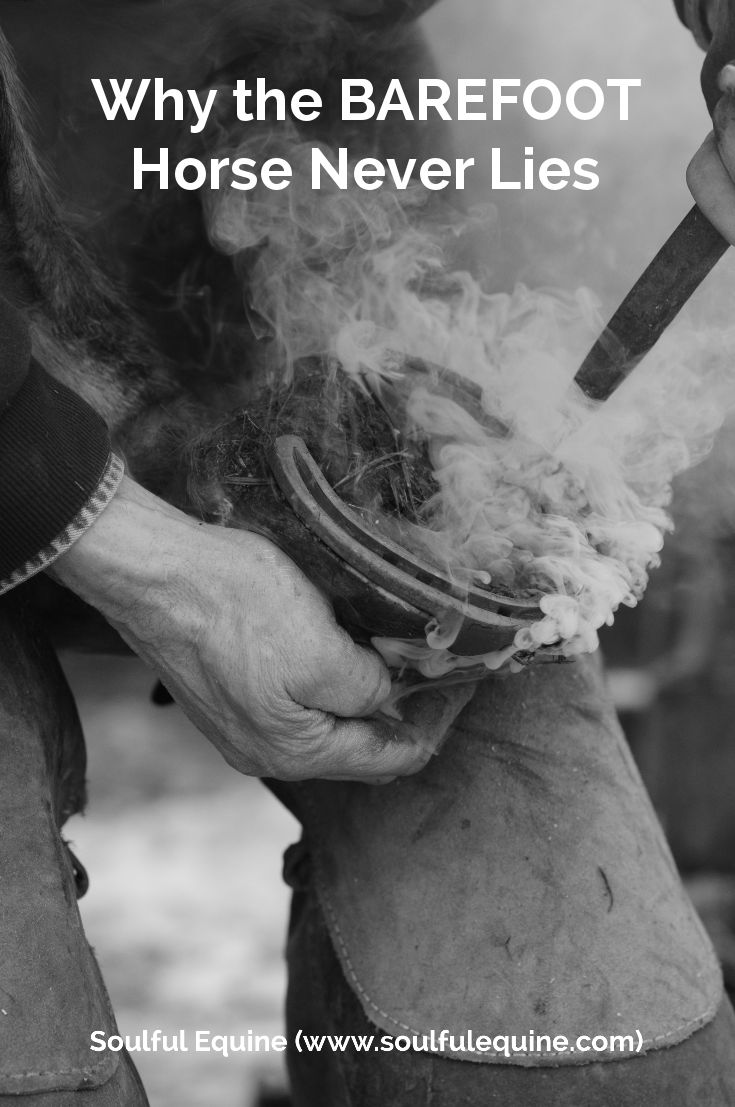
Picture this, your farrier or natural hoof trimmer stops by to trim your horse. As he drives up to your barn, you glance at the clock and realize you lost track of time. In a rush, you throw on your coat and run out the door to greet him.
As you approach the truck from the passenger side, he rolls down his window and you say, “I’ll be with you in a minute. I have to get Jewels out of the pasture.”
As you approach Jewels’ living area, you call out her name. She stops eating grass and looks toward you with ears forward, happy to see you.
She meets you half way, then offers to gently put her nose in the halter you’re holding. From there, you and Jewels head to the barn for her hoof care pedicure.
As you approach the barn, the two of you walk over terrain consisting of grass and a large gravel parking area. Jewels has no problem handling the gravel with her bare hooves.
This is the first time using this new trimmer, but he came highly recommended. You trustingly hand Jewels over to him and then head to the house to finish a few tasks you started earlier.
Once the trim is complete, the hoof care provider leaves. You walk over and untie Jewels to take her back to her pasture. She appears to walk fine across the grass but then immediately slows down and literally gimps across the gravel driveway. You think, “What have I done?”
####
This is a common scenario for many equine guardians, but one good thing that came out of that situation was immediate feedback from Jewels. Had Jewels been shod, her guardian may never had known – until it was too late – that the hoof care provider had caused harm.
Instead, she had immediate feedback.
A Powerful Benefit
What I’ve noticed over 10+ years of having barefoot horses is that the barefoot horse never lies.
I’ve found this simple but powerful by-product of a barefoot horse to be a wonderful benefit.”
Most think the opposite and believe that equine soundness issues happen overnight – but that’s not always the case. Sometimes a freak injury results in lameness, but most often, it happens over time and the underlying cause is usually overlooked.
Lameness may be subtle at first, but then turn into a bigger problem as time goes on.
Those subtle signs are usually the ones that are either considered “not an issue” or are considered “a minor issue” – therefore, they’re discounted and ignored.
The early signs are the ones to be aware of, so you can be proactive about your equine partner’s soundness.
The Shoeing Cover-up
Metal shoes easily cover up early signs of lameness. Shoeing is not much different than a drug that covers up symptoms of an underlying cause.
Substantial damage to the hooves is created over time the longer your equine partner remains shod. Shoes are known to cause damage to the hooves, legs and circulatory system of your horse.
As I mentioned in my article, Barefoot horse benefits – why bare is better, with shoes your equine companion is not able to easily feel the ground beneath her, which can result in reduced traction.
I don’t know about you, but I would much rather give my horse every opportunity to be as surefooted as possible – especially if I’m going to be on her back.
The Inappropriate Diet Cover-up
A horse’s soundness is closely tied to her diet. This is a concept that’s sometimes difficult for people to grasp.
Shoeing can easily cover up subtle signs of low-grade laminitis caused by an inappropriate and unnatural diet. Your equine partner’s diet may appear to be just fine, when in reality it’s not – this is an underlying cause of many lameness issues.
A diet that affects soundness is easily covered up by shoeing.
The Shoddy Farrier Cover-up
A farrier can easily cover up his poor trimming job and a sore-footed horse by shoeing. This cover-up is for the short term only and is not in your equine partner’s best interest – not to mention yours, from both an emotional and financial standpoint.
It’s easy to cover up the amount of damage caused to the internal structures of the hoof by shoeing your equine partner.
Shoeing gives you a false sense of soundness by covering up early signs of lameness. It also limits the horse’s healing mechanism.
Something to remember – a horse that’s only sound in shoes is not a sound horse.”
I would much rather know early on that my horse has a lameness problem, so I can be proactive versus remaining in denial.
Again, the barefoot horse never lies.”
Remember the story about Jewels? Jewels’ guardian got immediate feedback that the trimmer/farrier performed a trim that caused her horse harm.
Despite what most people in the equine industry think, it’s unacceptable for your horse to walk off less sound than she did before the trim – she should be the same or better.
You Must Reveal Lameness Problems Early On
When your equine companion is barefoot, underlying issues – that were once overlooked – are now revealed.
You’re now aware of any issues, such as a poor quality or inappropriate diet, low-grade laminitis, lower limb problems, a sore-footed horse, and poor quality farrier services.
A horse who’s not shod will always give you feedback on the effectiveness of your equine care program.
A barefoot horse never lies, because a metal shoe no longer covers up lameness symptoms.
This is a barefoot horse benefit.
Keep it soulful,
Stephanie Krahl
####
Picture credit – original photo modified in size and to include the Soulful Equine name, URL and article title
